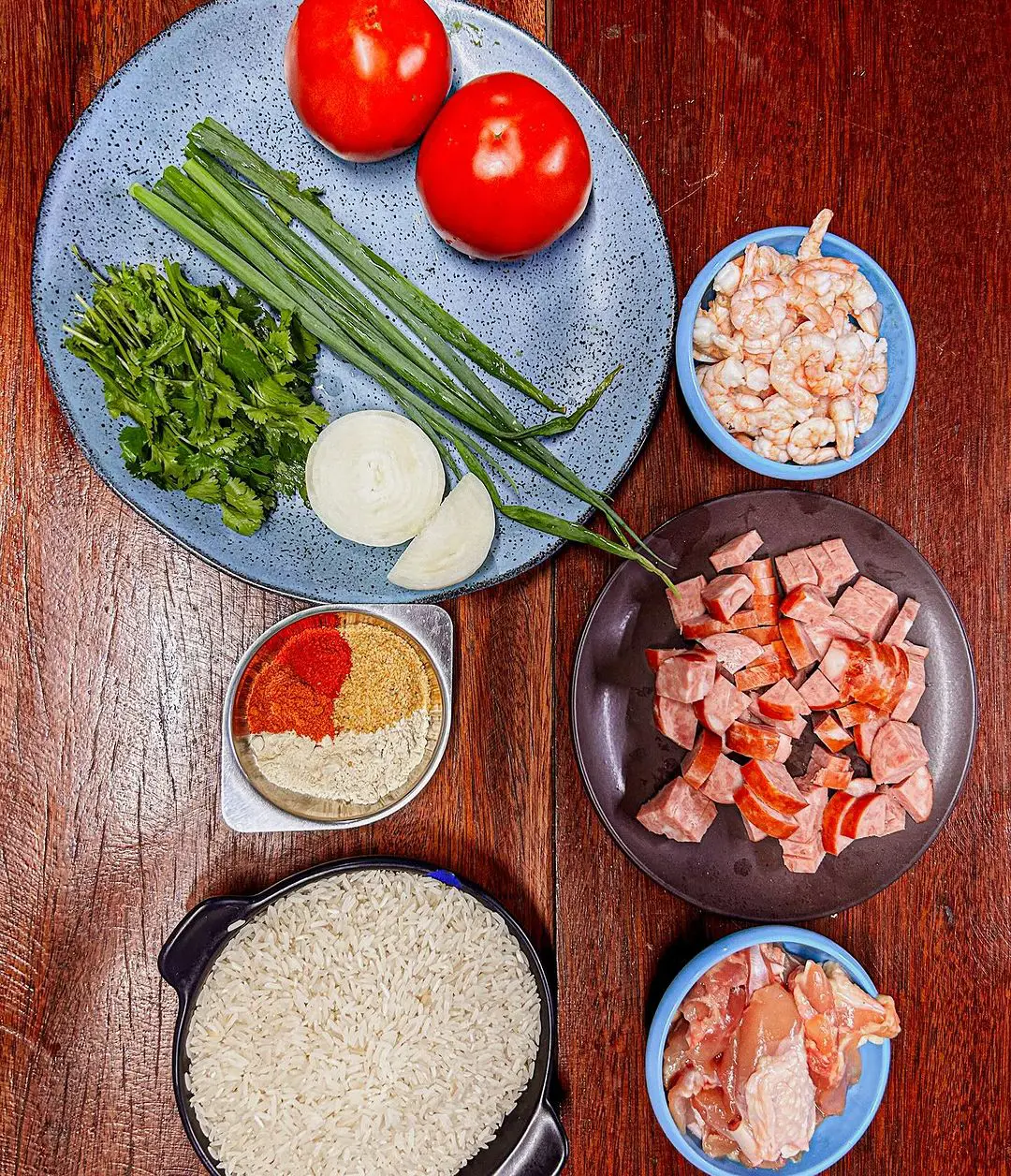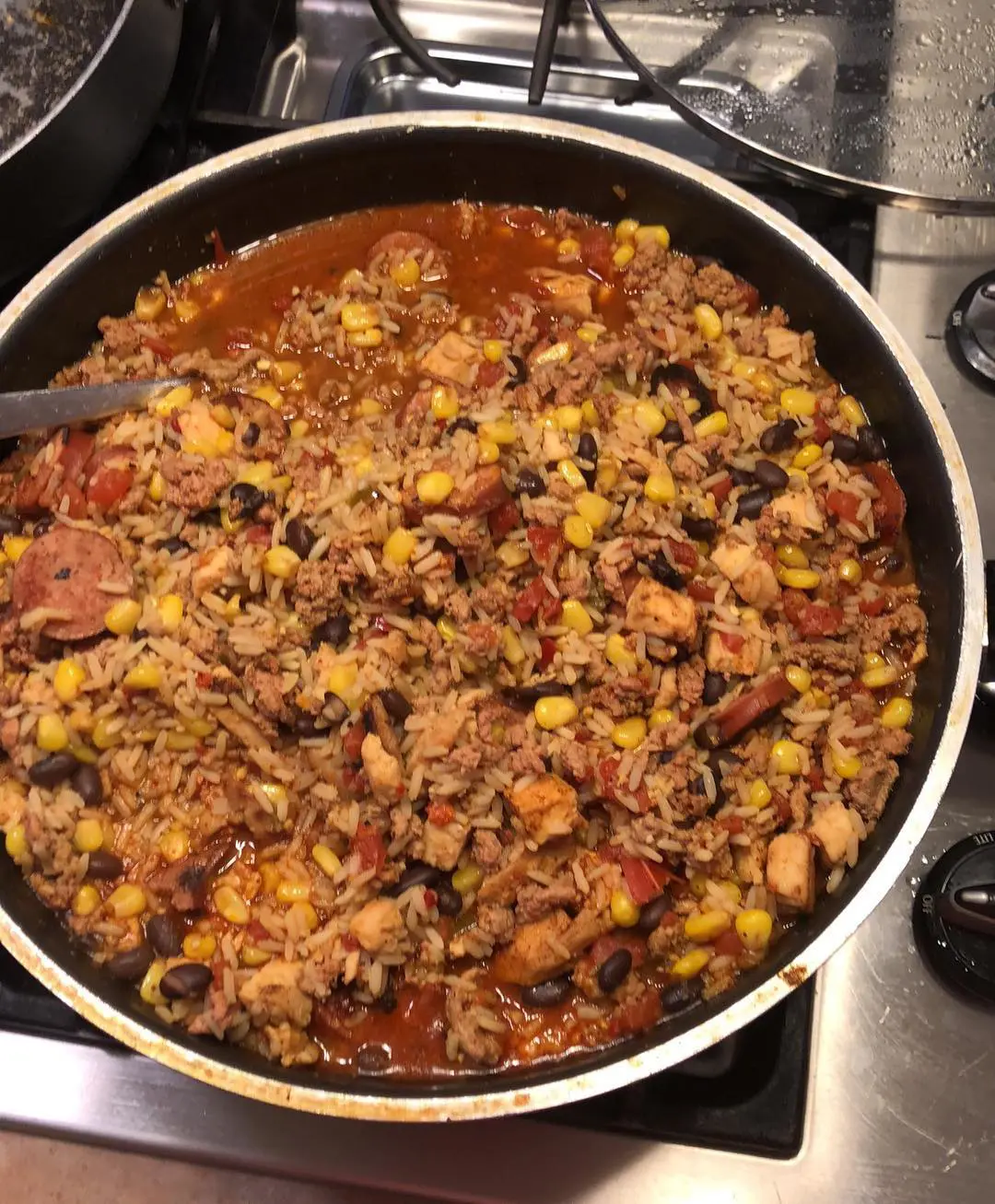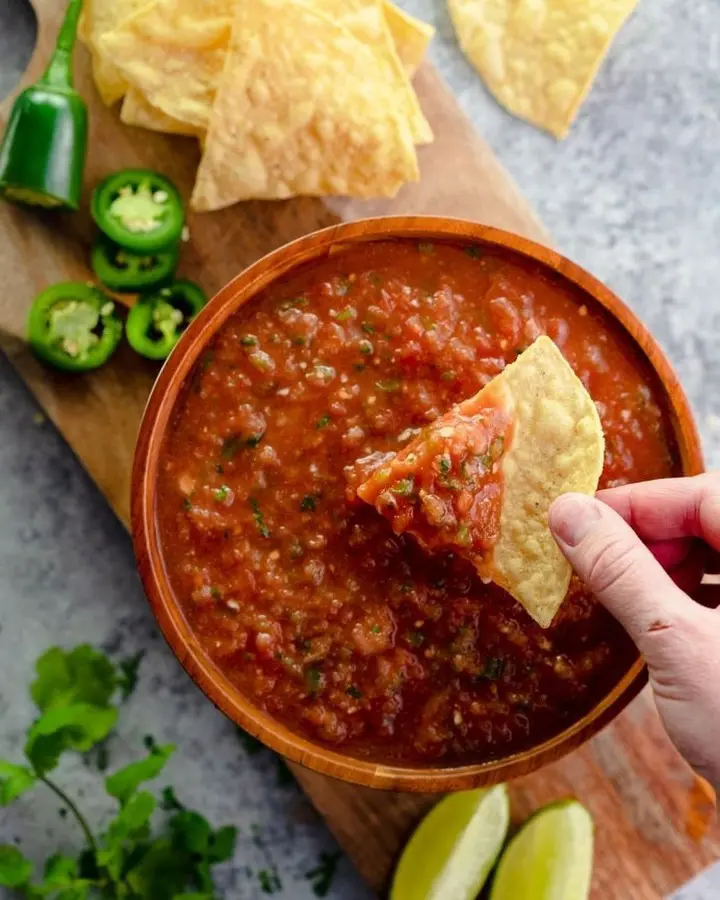Ingredients For Jambalaya
To make this light Cajun dish, use proteins, vegetables, and a set of aromatics and spices for seasoning.
- Rice: Take 2 cups of long-grain rice which is crucial to Jambalaya. This type of rice does not clump when cooked but at the same time, is well suited to pick up the flavour in the pot without become too tender.
- Meat: Three proteins that add dimensions and flexibility in the preparation of the dish. This includes 1 pound of sliced smoked sausage (Andouille or kielbasa) for smoky spicy flavor, 1 pound of chicken breast or thighs cut in bite size pieces to give less strong taste and mild texture to the meal, and finally 1 pound of peeled and deveined shrimp.
- Vegetables: The holy trinity of the aromatic base in Cajun cookery comprises 1 large chopped onion, 1 green bell pepper which has been diced, and 2 stalks of celery, which have been cut into small pieces. Also, 4 cloves of minced garlic are used; their main taste is pungent and aromatic. A petite canned diced tomato in a 14.5-ounce can. For garnishing, four slices of green onions give the dish a fresh crisp taste.
- Stock: In this recipe, 4 cups of chicken stock is used to cook the rice and other ingredients. This thick, delicious sauce penetrates the whole dish with a tender meaty taste and aids in constructing the typical texture of Jambalaya.
- Seasonings: Add 2 tablespoons of the Creole seasoning to produce a spicy and rich flavor, 1 tablespoon of the dried Thyme that imparts an earthy mint flavor and 2 bay leaves that produces a tea like flavor. Add salt and pepper as per your taste.
- Oil: 2 tablespoons of olive oil are used for sautéing the vegetables and browning the meats, helping to develop deep flavors through the Maillard reaction and ensuring the ingredients don't stick to the cooking vessel.
















